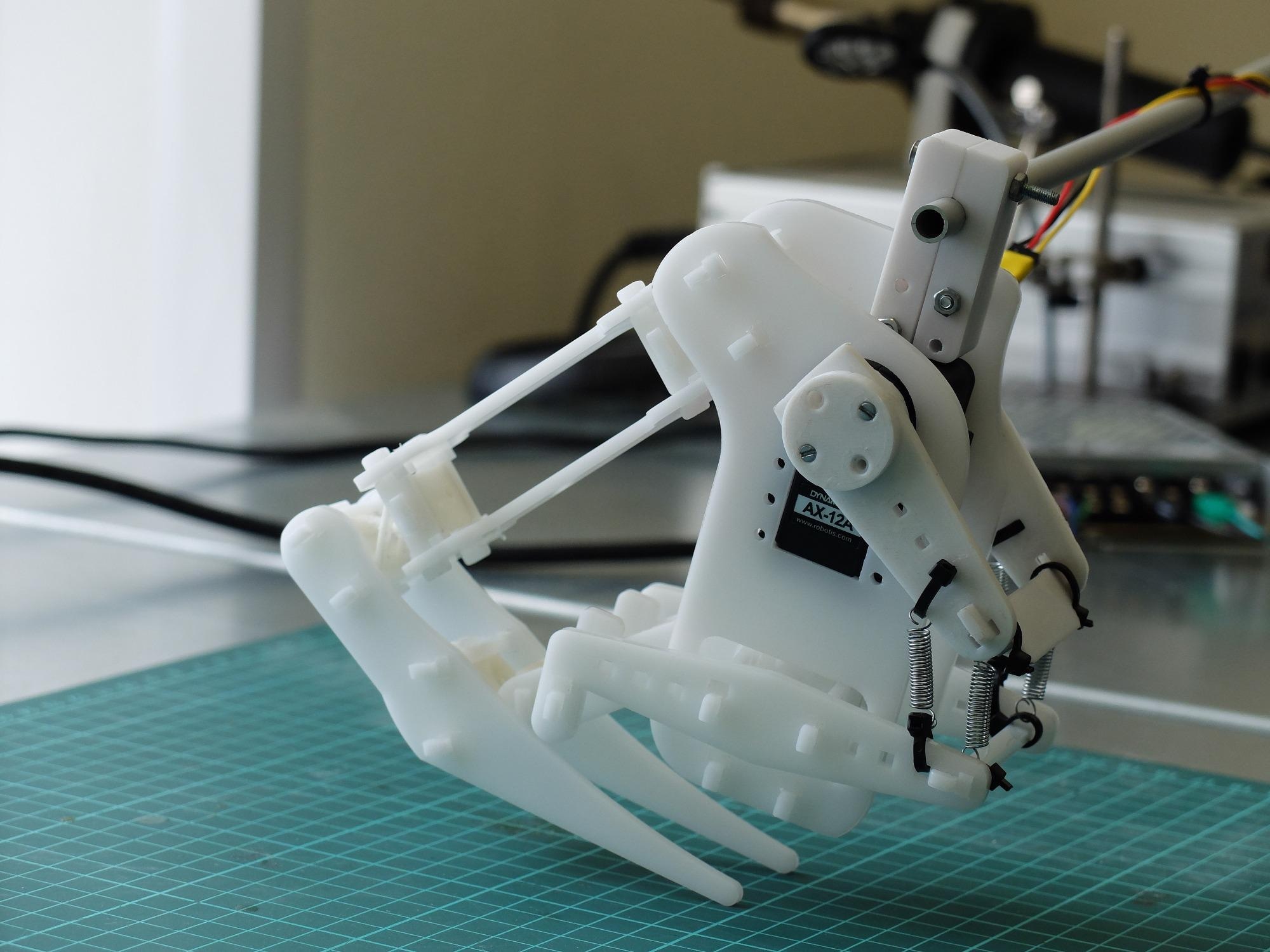Scientists from ITMO University have come up with a new way to design flexible, safe, and energy-efficient robots that can interact with objects in unexpected conditions. Their features were demonstrated on a prototype – a compact hopping robot.

Image Credit: ITMO University
Usual industrial robots, such as the ones used for car assemblage, can work efficiently only in a specific static environment with pre-determined objects. Nowadays, scientists develop design methods for service robots that will be able to interact with objects and surfaces in unexpected conditions safely and efficiently.
In the future, such robots will be used for inspection and maintenance of infrastructure, deliveries, and taking care of the elderly. The new method, suggested by Ivan Borisov, a researcher from ITMO University’s Faculty of Control Systems and Robotics, will allow robots to solve complex tasks in unexpected conditions without using complex control algorithms.
“The standard approach to the design of a four-legged robot is creating a box-shaped body and using simple mechanisms controlled by complex algorithms. An alternative approach is to see how nature has been solving similar problems over millions of years of evolution. With the help of morphological computing, we design a complex mechanical system, the actions of which will be determined by simple algorithms. Most of the required dynamics is already embedded in the system itself, and the algorithms are only required for stabilization and supplementation of the robot’s motion,” explains Ivan Borisov.
The scientists suggest using the method of morphological design. With its help, it’s possible to create devices that generate control effort thanks to the efficient distribution of weight that is suitable for elastic parts, as well as to the usage of elastic materials such as polyurethane instead of typical heavy elements, such as bearing parts and axes. At the same time, the motor and microcontrollers aren’t responsible for the whole process of movement but only for the correction of the robot’s behavior, which saves a lot of energy.
“Thanks to minimization of control effort and usage of elastic parts, the robots are safe for people and the environment; they require less electricity and don’t fall apart from an impact. In order to demonstrate the advantages of this method, we have designed and assembled a prototype for a hopping robot that confirmed our hypotheses,” explains Kirill Nasonov, a Master's student at the Faculty of Control Systems and Robotics.
The prototype is a preliminary research result but it proves the value of the suggested method. The final goal is the development of a galloping robot with a flexible spine . In September 2021, the project’s authors will present their research at one of the largest robotics conferences in the world – IEEE/RSJ International Conference on Intelligent Robots and Systems (IROS 2021).